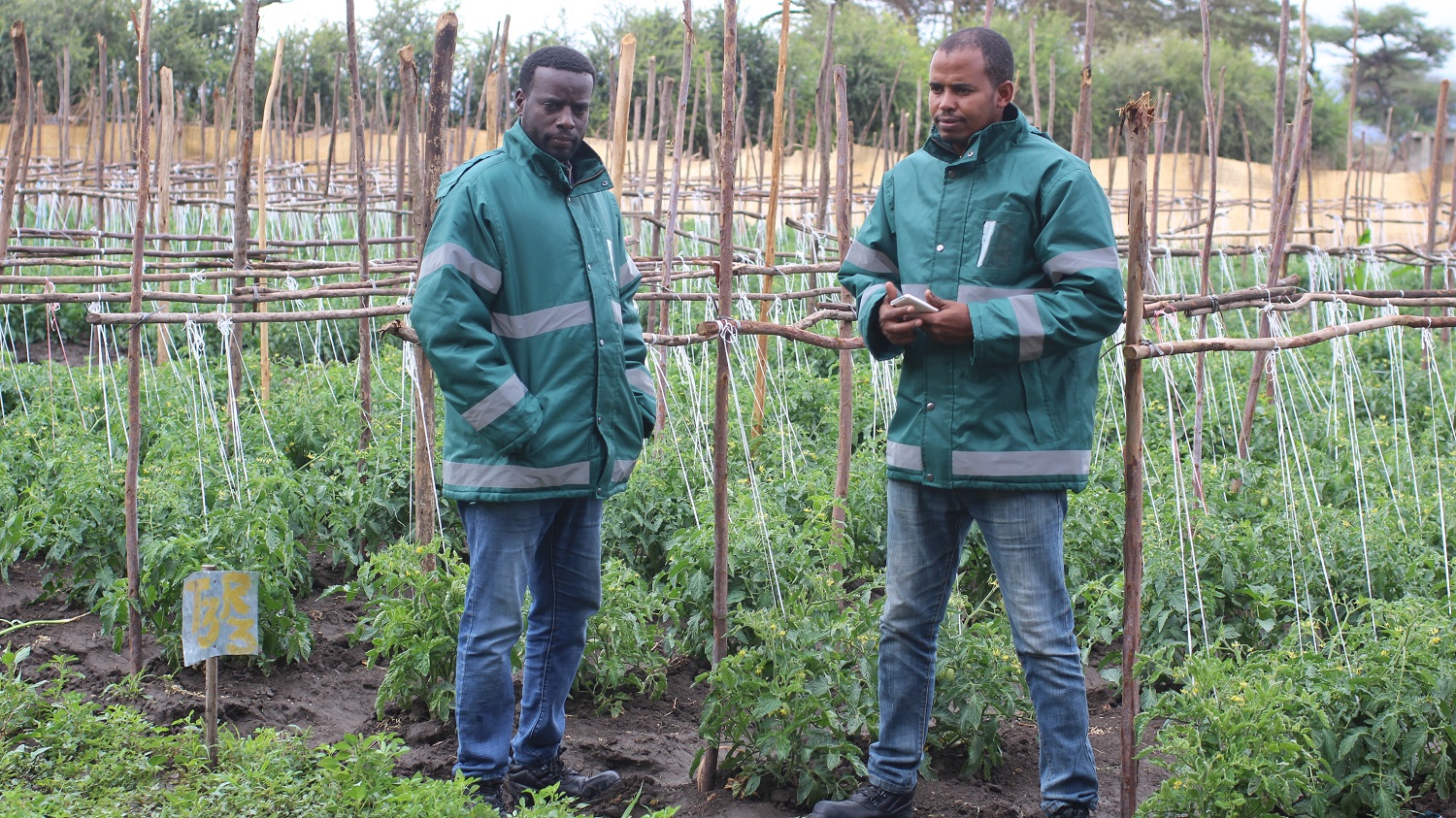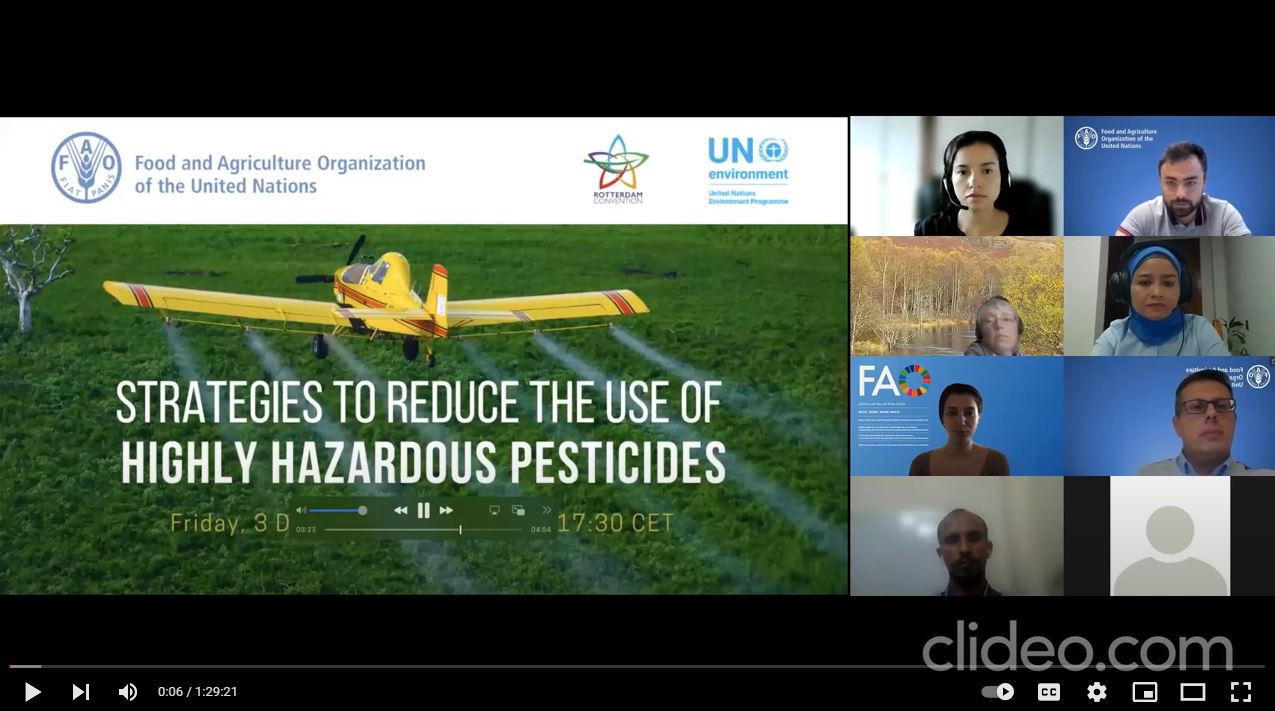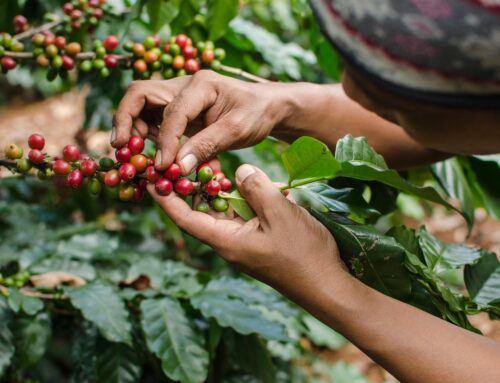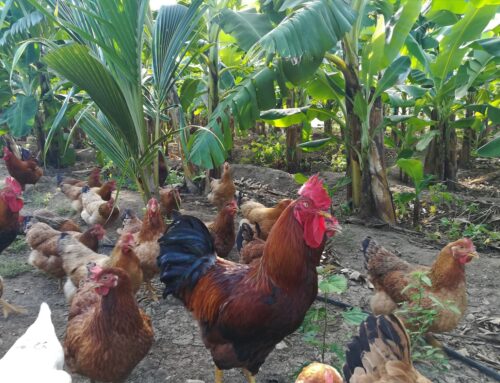As part of a webinar series organised by FAO and the Rotterdam Convention to share experiences in reducing and phasing out Highly Hazardous Pesticides (HHPs), PAN Ethiopia’s Project Coordinator, Atalo Belay, and PAN UK’s Staff Scientist, Stephanie Williamson, recently presented our experiences working with smallholder vegetable farmers in Ethiopia’s Central Rift Valley.
Over 130 people from four continents attended the session as we shared data showing that Integrated Pest Management (IPM) methods can reduce overall frequency of synthetic pesticide spraying by around 75-80% in onion and tomato fields. This was achieved by using the food spray method to attract predatory insects into the crop, combined with cultural methods to make the field less attractive to pests and diseases. These include: wider spacing of transplants; good field hygiene; sanitary pruning of infected and older tomato leaves; addition of vermicompost; careful irrigation; and thorough clean-up of crop waste after harvest. When natural enemies alone cannot keep pests in check, the preferred treatment is with neem seed extract, to repel pests. Finally, in cases of extreme pest pressure, and only after all of these measures had been deployed, did farmers resort to synthetic pesticides. Combining these IPM methods PAN Ethiopia has shown that it is perfectly feasible to eliminate use of harmful organophosphate insecticides including chlorpyrifos, dimethoate, profenofos and the environmentally harmful pyrethroids, deltamethrin and lambda-cyhalothrin, while also halving fungicide use.

PAN Ethiopia field agents in tomato food spray trial plot. Credit PAN Ethiopia
As well as the presentation from PAN, Nurmi Pangesti from International Rice Research Institute in Cambodia shared work on incorporating nectar strips of flowering plants into rice fields to support beneficial insects. These can reduce levels of the key pest Brown Plant Hopper and deliver 70% reduction in insecticide use, while increasing rice yield and net income by 5% and 7.5%, respectively. These ‘ecologically engineered’ rice fields are being promoted in SE Asian countries, using rows of mung bean, sesame, gourd, okra or chilli or leaving natural vegetation strips of flowering weeds.
Maria Angelica Bonilla from Rainforest Alliance also contributed, describing the evolution of this voluntary standard’s pesticide policy since 1993, aiming for minimal reliance on pesticides by building ecosystem diversity, regenerative practices and selected use of biopesticides and natural enemies. Maria discussed the challenges in phasing out all uses of HHPs in the short term across the almost 2.5 million farms certified under their scheme and the current, time-limited crop and country-specific, exceptional uses granted for a small subset of the Rainforest Prohibited pesticide list. She highlighted the need for more stakeholder collaboration, farmer training, research on alternatives, an IPM knowledge database and supportive national farming policies to help reach the goal of eliminating HHPs.
Watch the full presentation below. Download detailed notes here.






